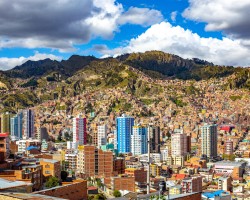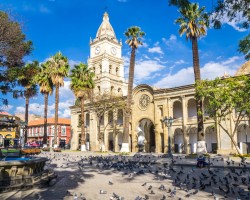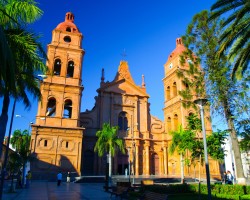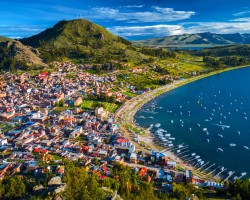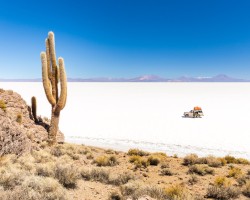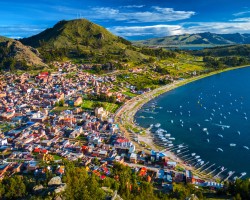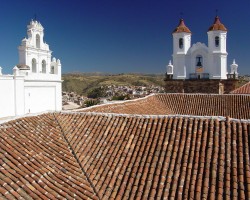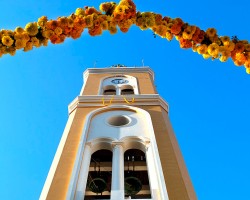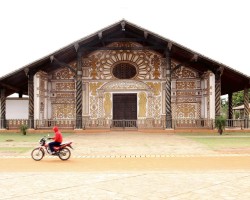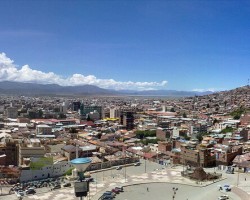Best time to go to Bolivia for a perfect weather and where to go?
When is the best time to go to Bolivia?
The best time to travel to Bolivia is during the dry season, between March and October. During the austral winter, from May to September, the weather is particularly pleasant throughout the country, making for an unforgettable trip. Indeed, as the country is located below the equator, the seasons are reversed compared to Europe.
However, traveling to Bolivia during the winter has two drawbacks: it can be very cold at night in the Andes region and it corresponds to the high tourist season, especially in July and August when Europeans are on summer vacation. This results in high airfares, but these are offset by a relatively low cost of living on site.
When is the best time to visit Bolivia if you are on a tight budget? To avoid the crowds at tourist sites and not break the bank, it is ideal to plan a trip during the shoulder seasons: in May-June or September-October. If your vacation falls in July or August and you have the time, it may be interesting to compare airfares to arrive on the Peruvian side before crossing the border.
The rest of the year, from November to February, is the rainy season. A trip is still possible, but you will have to deal with unpredictable weather conditions that may require you to change your plans along the way. It will also be difficult to go hiking or trekking in the mountains. However, enthusiasts of cultural discoveries can still have a great time.
The only period we advise against traveling to Bolivia is in the month of December. Due to the year-end holidays, it is also a peak tourist season with corresponding high prices, and the weather is not ideal for fully enjoying the trip.
What should you pack in your suitcase for a trip to Bolivia? If you are planning a trip during the austral winter, you will need to pack both summer clothes and warm clothing for the evenings. Good hiking shoes are essential, as well as sun protection. With the country having an average altitude close to 1200 m, a hat, sunglasses, and sunscreen will be useful on a daily basis, especially if you are going to the Uyuni salt flats where the reflection is very strong. To prevent altitude sickness, you can easily find treatments on site, usually based on coca leaves. And if you go down to the valleys, mosquito repellent is very useful, even during the dry season.
Where and when to go based on the weather?
Altiplano
La Paz, Titicaca Lake (Copacabana), Uyuni...
Sub-Andean Bolivia
Cochabamba, Sucre, Tarija...
Tropical Lowlands
Santa Cruz (Bolivia), Riberalta, Trinidad...
To get all the information about the climate and weather in Bolivia for a specific month, click on the corresponding link below:
Bolivia in january Bolivia in february Bolivia in march Bolivia in april Bolivia in may Bolivia in june Bolivia in july Bolivia in august Bolivia in september Bolivia in october Bolivia in november Bolivia in december
Best time to travel to Bolivia by cities
Climate and Weather in Bolivia
Bolivia is a South American country located between Brazil, Chile, Argentina, Paraguay, and Peru. The famous Lake Titicaca serves as a border with the latter, with the town of Copacabana located in the middle of the lake. Due to its geography and significant differences in altitude, Bolivia's climate is diverse:
- In the eastern plains, in the Santa Cruz de la Sierra region, there is a tropical savanna climate with a dry winter.
- In the Uyuni desert and surrounding areas, the climate is dry and cold steppe.
- At Lake Titicaca in the west, the climate is subtropical at high altitude with a dry winter and a temperate summer.
- Further inland, towards Coroico, there is an oceanic climate with a temperate summer.
- Elsewhere, other subtleties are present, notably in the capital, La Paz, which has a tundra polar climate.
Bolivia's weather is strongly influenced by the different geographical zones and their altitude. From Santa Cruz to La Paz, passing through Uyuni or Cochabamba, there can be extreme temperature and precipitation variations.
Moreover, the country experiences two distinct seasons:
- The rainy season corresponds to the austral summer and lasts from November to March in most parts of the country. It is particularly pronounced in the east, less so in the rest of Bolivia.
- The dry season coincides with the austral winter and generally lasts from April to October. It is shorter in the eastern part where there are still moderate precipitation throughout the season.

Climate in the Altiplano (West)
With an average altitude of 3000 m, the Bolivian Altiplano experiences very variable weather conditions depending on the seasons and the specific location. The most favorable months to visit this region are April, September, October, and November.
Throughout the southern winter, from April to October, precipitation is very rare and the sky remains invariably blue. In July-August, it is cold as temperatures range between 1 and 10°C and can even be negative if the wind picks up. It is not uncommon to see morning frosts in La Paz. In October, there is often wind, so the perceived temperature can be even cooler, but this does not prevent visits.
Being one of the driest regions in the world, rainfall is scarce during the southern summer, between November and March. However, they are frequent, beautifully greening the landscapes. In La Paz and Lake Titicaca, the thermometer rarely exceeds 12°C during this time of the year. You will need to go to the Uyuni region to experience more pleasant temperatures: between 17 and 20°C at the hottest time of the day.
Climate in the Sub-Andean Region of Bolivia
With its predominantly subtropical climate of high-altitude with a dry winter and temperate summer, the Sub-Andean region of Bolivia can be visited between February and November, making the weather conditions very pleasant for much of the year. In general, it is warmer than in the Altiplano, but precipitation is more abundant.
The southern winter lasts longer than in other parts of the country. From February to May and from August to November, maximum temperatures range between 21 and 29°C. In June and July, it is colder: around 20°C during the day. Nighttime temperatures remain acceptable throughout the year, with averages between 17 and 19°C.
During the rainy season, especially from December to February, the heat can be stifling. The thermometer reaches around 30°C, humidity levels are very high, and it can rain up to 21 days per month. Tarija and the Parque Nacional Tunari are the wettest areas during this period.
Climate in the Tropical Plains (East and North)
Very different from the rest of Bolivia, the climate in the east and north is mostly tropical savanna with a dry winter. Thanks to its warm temperatures, this region can be visited from January to November. However, those who are sensitive to heat may find it uncomfortable.
During the southern winter, temperatures generally reach around 35°C, but it is not uncommon for the thermometer to approach 40°C in Trinidad in August or September. During this period, the tropical plains often experience cold snaps due to icy winds coming from Patagonia: the surazos. Precipitation is very low during this season, and it never lasts long.
During the rainy season, between November and March, temperatures range between 30 and 33°C, but it rains a lot. In February, there can be up to 23 days of rain in the month. However, these are mostly intense but brief tropical showers, and the sun can quickly return.
Temperatures and rainfall in Bolivia
On these 2 graphs, we present the evolution of temperatures of Bolivia and month-by-month rainfall for the cities of La Paz, Cochabamba, Santa Cruz (Bolivia), Titicaca Lake (Copacabana) and Uyuni.
Peak visitor numbers and tourist seasons in Bolivia
Find out when Bolivia has its high tourist season (the period when the influx of tourists is highest) and off-peak tourist season using our data and figures.
Tourist seasons in Bolivia
The months with low numbers of tourists are: January, February, April, May, June and November. The number of visitors to Bolivia is high in: March, July, August, September, October and December.
- Very low season in Bolivia: January, April, May and June.
- Low season in Bolivia: February and November.
- High season in Bolivia: March and October.
- Peak season in Bolivia: July, August, September and December.
Figure: Visitor index for Bolivia month by month
Average price for flights to Bolivia
A return flight between London and La Paz is generally cheaper if you go in may ($ 1019 on average): this is the best time for travellers on a tight budget. In contrast, you may end up paying $ 581 more for your airline ticket to La Paz if you go in august.
Find the best price for your flight Flight prices to Bolivia
Where to go in Bolivia?
This table allows you to see the maximum temperature for each city and our opinion on the weather month by month (see colour legend below the table).
| Cities | jan. | feb. | mar. | apr. | may | jun. | jul. | aug. | sep. | oct. | nov. | dec. |
| La Paz | 12°C | 12°C | 12°C | 13°C | 13°C | 12°C | 12°C | 12°C | 13°C | 13°C | 14°C | 13°C |
| Cochabamba | 19°C | 19°C | 20°C | 20°C | 20°C | 19°C | 19°C | 19°C | 20°C | 21°C | 21°C | 20°C |
| Santa Cruz (Bolivia) | 31°C | 30°C | 30°C | 29°C | 26°C | 25°C | 25°C | 29°C | 33°C | 33°C | 33°C | 32°C |
| Titicaca Lake (Copacabana) | 12°C | 12°C | 13°C | 12°C | 11°C | 10°C | 10°C | 11°C | 12°C | 13°C | 14°C | 13°C |
| Uyuni | 18°C | 18°C | 18°C | 17°C | 14°C | 12°C | 11°C | 13°C | 16°C | 18°C | 20°C | 19°C |
| Riberalta | 30°C | 30°C | 30°C | 31°C | 31°C | 32°C | 33°C | 36°C | 37°C | 35°C | 33°C | 31°C |
| Sucre | 20°C | 20°C | 20°C | 20°C | 19°C | 19°C | 19°C | 20°C | 21°C | 22°C | 22°C | 21°C |
| Tarija | 21°C | 20°C | 20°C | 19°C | 18°C | 18°C | 18°C | 20°C | 22°C | 22°C | 21°C | 21°C |
| Trinidad | 31°C | 30°C | 30°C | 30°C | 29°C | 29°C | 30°C | 34°C | 37°C | 36°C | 33°C | 32°C |
| Concepción | 31°C | 30°C | 30°C | 29°C | 28°C | 28°C | 28°C | 32°C | 35°C | 34°C | 32°C | 32°C |
| Coroico | 12°C | 12°C | 12°C | 13°C | 13°C | 12°C | 12°C | 12°C | 13°C | 13°C | 14°C | 13°C |
| Oruro | 16°C | 16°C | 16°C | 16°C | 14°C | 13°C | 13°C | 14°C | 16°C | 17°C | 17°C | 16°C |
| Parque Nacional Amboró | 31°C | 30°C | 30°C | 29°C | 26°C | 25°C | 25°C | 29°C | 33°C | 33°C | 33°C | 32°C |
| Parque Nacional Carrasco | 18°C | 18°C | 18°C | 18°C | 18°C | 17°C | 17°C | 18°C | 18°C | 19°C | 20°C | 19°C |
| Parque Nacional Cotapata | 12°C | 12°C | 12°C | 13°C | 13°C | 12°C | 12°C | 12°C | 13°C | 13°C | 14°C | 13°C |
| Parque Nacional del Gran Chaco Kaa-Iya | 34°C | 33°C | 32°C | 29°C | 26°C | 24°C | 25°C | 29°C | 33°C | 34°C | 34°C | 34°C |
| Parque Nacional Iñao | 29°C | 28°C | 26°C | 24°C | 21°C | 20°C | 20°C | 24°C | 27°C | 29°C | 29°C | 29°C |
| Parque Nacional Isiboro Secure | 18°C | 18°C | 18°C | 18°C | 18°C | 17°C | 17°C | 18°C | 18°C | 19°C | 20°C | 19°C |
| Parque Nacional Madidi | 25°C | 24°C | 24°C | 24°C | 23°C | 22°C | 22°C | 25°C | 26°C | 26°C | 26°C | 26°C |
| Parque Nacional Noel Kempff Mercado | 32°C | 31°C | 31°C | 31°C | 30°C | 31°C | 32°C | 36°C | 38°C | 36°C | 33°C | 32°C |
Legend:
perfect weather
good weather
tolerable weather
bad weather
very bad weather
About Bolivia
What can I do in Bolivia?
Beaches / swimming
Nature and countryside
Culture and heritage
Sports
Family travel
Crafts / shopping
Gastronomy
Nightlife
Is this weather information for Bolivia reliable?
Climate data for Bolivia has been gathered every day since January 2009. The analysis of these meteorological data for Bolivia allows us to determine the average for each month in La Paz, Cochabamba, Santa Cruz (Bolivia), Titicaca Lake (Copacabana), Uyuni, Riberalta, Sucre, Tarija, and 21 other cities.
So yes: this data is reliable except in cases of temporary climate disruption in the region.
